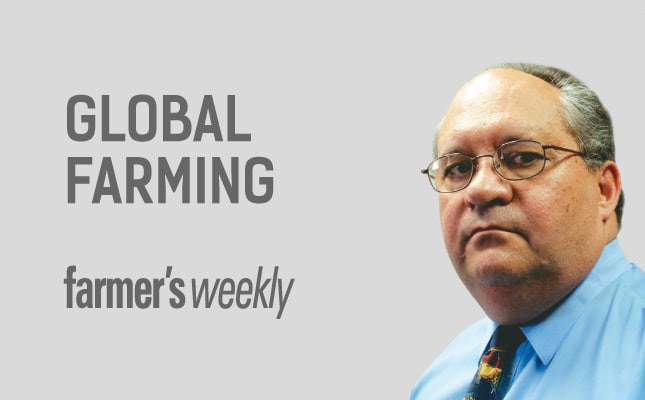
In 2011, the world’s population reached seven billion. A recent UN report estimates that this figure will be almost 10 billion by 2050, with the fastest growth expected to occur between now and 2030 (see graph) food security need to become a priority.
READ: Building agricultural capacity in Africa
Food security and population growth
The main part of this population growth will take place in developing and least-developed countries in Africa, Asia and elsewhere.
Africa’s population is growing at 2,55%/year, compared with the current global population growth rate of 1,18%. Right now, 16% of the world population lives in Africa. This will increase to 25% by 2050.
More than half of the world’s population already live in urban areas. The size of the urban population will increase to five billion by 2030. It’s also estimated that more than three billion people will enter the middle class in the period to 2050.
This is important for future food demand as higher income results in greater consumption of meat, milk and eggs.
South Africa’s population is estimated at 54,4 million. Urbanisation has accelerated over the past decade with an estimated 55% of people already living in urban areas in South Africa.
The percentage of households in the three middle to higher income brackets (LSM 5-7) has increased by 22%, 68% and 109% respectively. This has driven the growing demand for high-value food products in South Africa.
Food security
FAO statistics estimate that one in nine people in the world is undernourished. Despite a growing global population, the percentage of undernourished people decreased from 18,6% in 1990-1992 to 10,9% in 2014-2016. Sub-Saharan Africa accounts for 94% of the continent’s undernourished people.
While progress was made in lowering the prevalence of undernourishment in the past decade, global food security will not be achieved soon.
The FAO expects an increase of 60% in the demand for meat, milk and eggs by 2050. If agriculture continues to employ current production methods, it will struggle to meet the growing food demand.
In a presentation at the recent International Dairy Federation World Dairy Summit in Vilnius, Lithuania, Carlos Saviani, vice-president of the World Wildlife Fund’s food team, emphasised that the Earth takes 1,6 years to regenerate the renewable resources we use in a single year. Clearly, continuing in the current way is unsustainable.
Modern commercial agriculture has already made great strides in producing more food with current resources. In the US, agricultural output has grown by 250% on the same level of inputs in the past 60 years.
The following examples are based on a report by Jeff Simmons et al: seven cattle today produce the same quantity of beef as that produced by 10 cattle in 1977; dairy cows produce four times as much milk as in the 1940s; 38% fewer pigs are needed to produce the same quantity of pork as in 1959.
Pressure on commercial egg producers, however, has resulted in a decrease in production. Up to the late 1990s, egg production increased steadily by 1,75 eggs per hen per year. Since then, changing practices have seen productivity decrease by 0,8 eggs per year.
Commercial agriculture will be able to meet the growing food demand if it is allowed to use modern production technology, including biotechnology.
Needed: certainty
South Africa has one of the few established commercial farming systems, supported by good infrastructure in Africa. SA farmers are ideally positioned to provide the food needed by the growing African market.
However, uncertainty about government policy, especially regarding property rights, may induce more SA farmers to grow products in other African countries with friendlier government structures.
Dr Koos Coetzee is an agricultural economist at the MPO. All opinions expressed are his own and do not reflect MPO policy.
This article was originally published in the 23 October 2015 issue of Farmers Weekly.




